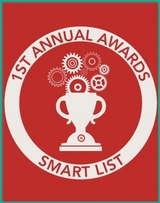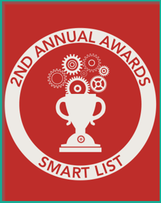
They also found themselves inspired by the passion of Nancy Conrad, founding chair of the Challenge, to honor innovation that solves overlooked local and global challenges. As you’ll learn by reading about these impressive students, they have much in common with this mission.
Registration for the 2020-21 Conrad Challenge is now open, so to learn more and get your team of 2-5 students involved, enter here.
How did you come across the winning idea? Is there a personal story involved?
We are driven by our academic interests (science for Anand, business for Anya) and our desire to instigate social change. Since grade 3 we’ve been running used book drives to donate them to underprivileged school libraries.
Since early childhood we’ve been visiting and interacting with children of underprivileged schools, especially in rural India. We’ve read stories to children and played football with them. It was not difficult to observe the number of children who cycled to school; many cycled 20-25 kilometers daily. Gender inequality and poor economic conditions leave many arriving in school with little or no breakfast and the Indian summer sun left them tired and drained of energy as they cycled into the school gates. Last year, we began working on developing the PowerCycle that could solve this local problem.
We also noticed the number of bicycles on the streets in a day and the number of tired, hard working people making their way home after a long day of work. With that in mind, as well as considering cost and environmental standards, we developed a solar-powered bicycle designed to increase efficiency and reduce physical labor and financial costs for individuals from low-income communities in rural India.
Today, in rural as well as parts of urban and developed India, the use of bicycles is the most common mode of transportation, mostly the urban poor. Statistics demonstrate the need for innovation:
- 46% of the Indian households use the bicycle as the primary mode of transport (PDF).
- Millions of Indians use mechanical cycles to commute long distances
- Traveling 10-20 kilometres everyday with an intake of less than 2050 calories lowers the life expectancy of the cyclist and puts their family’s security at risk
How did you create the PowerCycle?
The PowerCycle has a design similar to that of a regular bicycle, but with a twist ― it has pedals, but also a motor which is connected to solar panels placed above the seat. It greatly reduces the physical labor required for cycling. The solar panel is placed in such a manner that it acts as a shade from the harsh sun. PowerCycle aims to solve three major problems of energy, transport, and hunger in rural India ― producing not just economic benefit, but an overall improvement in quality of life.
To begin, we decided to take the most popular common men’s cycle that can be seen for generations in 50% of the Indian households. Then, we needed a mentor for the project to guide us with the technical aspects of the design and help us make it as efficient as possible. We took the help of a junior engineer Arun Mathur, who also had knowledge of the available components in the Indian market. We approached Angelique Foundation to fund the experiment and the prototype. Slowly and steadily we worked on the design and searched for the components in the markets of Delhi.
After working through a few challenges, our design took shape:
- Both the solar power and the shade above the cyclist’s head help to conserve energy. The PowerCycle helps the low income people to conserve precious calories and maximize their energy stores.
- The PowerCycle has a 150-watt panel, a 20AH Li-ion battery (24V) allowing energy to be stored for the cycle so it can work even if there is no sunlight (Li-ion long battery lives, low maintenance, high energy density, smallest in size, light in weight, it can run up to 1200-1300 charge cycles).
- The unique placement of the solar panel makes it optimum for balance.
We conducted two major experiments to assure that we were meeting our goals. The first one focused on power generation and we conducted it at three different times of day, across two different locations, to get quality, reliable data. The second experiment was on power saving ― essentially how much energy could the cycle directly save a rider?
We found great results from each. The PowerCycle can travel up to 12.6 kilometers (7.8 miles), at minimum, on one single charge if there is no sunlight and can run at an average speed of 20 km per hour 12.4 mph). It can also help a rider save up to 431 kcal compared to a normal bicycle.
This is not to say that we did not face challenges along the way, but after tremendous persistence and months of testing, we’ve been able to successfully design a product dedicated to providing energy-efficient transportation to the masses.
What are your upcoming plans regarding this concept? Will it be scaled up and made commercially available?
We are waiting for the patent to come through this year. and are already well funded by Angelique Foundation and our friends and family. We are waiting to make prototypes and test run them to see if they are marketable and will be partnering with Indian Institute of Technology engineers to improve on the design to make it more efficient and lower its cost further.
We then plan to partner with a leading cycle manufacturer to take the product to the common man. The backup plan is to make low cost PowerCycle kits that are easy to assemble on the existing cycle.
PowerCycle is here to stay and solve the daily problem faced by millions of cyclists who use it as a primary mode of transport.
Learn more about PowerCycle by visiting www.powercycle.in
This article was originally published on edCircuit












